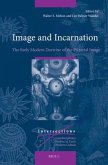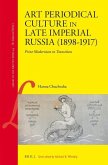In the course of the early sixteenth century the printed book decoration underwent a double metamorphosis. First stylistically, through the replacement of the previous medieval mostly floral embellishments by new motifs copied from Islamic or Byzantine sources, or borrowed from antiquity. Second technically, by the gradual inclusion of cast ornaments into the printer's bills-of-fount. They increasingly replaced the prestigious, sumptuous and time-consuming hand-painted illumination and decoration, or the less costly and sometimes crude woodcut techniques. This survey focuses on one pattern of these Renaissance ornaments, namely the vine leaf, or as it is commonly known, the 'Aldine' leaf. The motif has mainly been studied from a designer's point of view, but a more bibliographically oriented survey seems to be missing. To fill up this void this survey aims to register all sixteenth-century sorts known. Next to a facsimile in true scale, the bibliography contains the punchcutter's name, the size, occurrences, type-specimens, preserved artefacts and notes.








